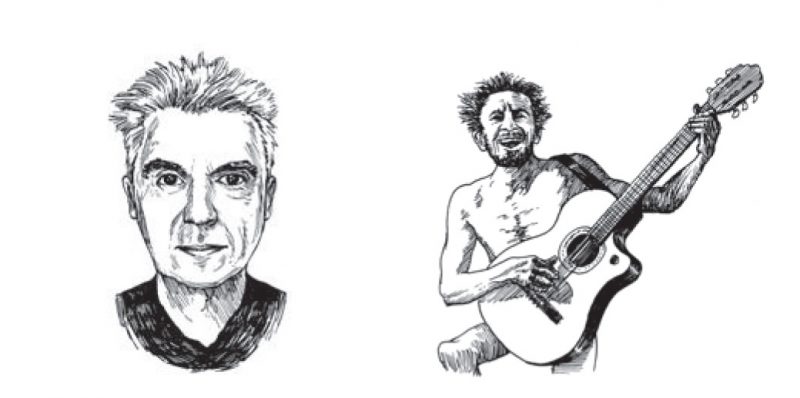I stumbled upon the music of Tom Zé accidentally. On my first trip to Brazil, in 1986, I went to Salvador (Bahia) and Rio, and in the latter city I did a little record shopping. Some artists had been recommended to me, but largely I was buying blind, as there were no guides to Brazilian music available and finding it on the internet wasn’t possible yet. I came upon one disc (these were all vinyl) that had the word samba in the title, but instead of a girl in a bikini on the cover, there was coiled barbed wire. Something must be different about this one—so I threw that in as well.
When I listened to it back in New York, I was shocked. The record, Estudando o Samba, was more akin to some New York downtown experimental work than the lilting melodies and sexy rhythms of the more well-known Brazilian artists, or of the popular samba recordings. Who was this guy? Where did this record come from, and how did it come about?
I asked Arto Lindsay, a New York no-wave musician (of the band DNA) who grew up in Brazil and who has gone on to a successful career producing records there. He said Tom was part of the Tropicália cultural movement of the late ’60s and early ’70s, though while some of the others involved in that scene went on to greater success (Gilberto Gil, Caetano Veloso), Zé never became as popular as they did. He also continued to make more probing and experimental music, while they managed to find a way to meld their innovations with more accessible popular songs. When I bought his record, he was on the verge of being forgotten, or being considered a historical footnote at best.
What was unique about Tom’s music is that, while radical, it was also rooted in popular music. This wasn’t noise or intentionally difficult music—it had roots in the traditional music and instrumentation of the Brazilian Northeast (what we might compare to our rural South), while simultaneously referencing Cage, Stockhausen, Reich, Glass, and other “serious” new music composers. Maybe you could even compare him to Captain Beefheart in that way—in that artist’s unique combination of deep rural blues, dada, and serious composition.
I received some complaints from Brazilians asking why my North American label was releasing Tom Zé of all people, and why didn’t I pick some more beautiful and popular artist instead of this half-forgotten weirdo? Well, after a while, a mainly younger generation of Brazilians came to know Tom’s music and his incredibly innovative performances that sometimes incorporated grinders and floor polishers as instruments! They saw him as a kindred...
You have reached your article limit
Sign up for a digital subscription and continue reading all new issues, plus our entire archives, for just $1.50/month.
Already a subscriber? Sign in





